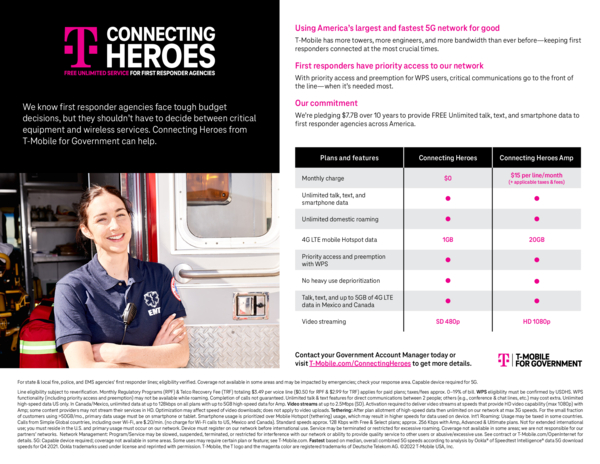T-priority Network Slice - First Responder

The roar of sirens may soon be accompanied by a silent but equally crucial enhancement: prioritized network access for first responders. A new technology, known as T-priority Network Slice, promises to give emergency services a dedicated and reliable communication channel, even during times of network congestion.
This dedicated slice of the network, designed to prioritize critical communications, is poised to improve response times and coordination during emergencies. It marks a significant step forward in leveraging advanced telecommunications to bolster public safety.
So, what is T-priority Network Slice? In simple terms, it's a virtual network carved out of the existing mobile network infrastructure. This dedicated slice prioritizes data traffic for first responders – police, fire, and ambulance services – ensuring their communications are not hampered by bandwidth-hogging activities like streaming video or social media use by the general public during a crisis.
The Nuts and Bolts
The concept hinges on network slicing, a 5G capability that allows operators to create multiple virtual networks with distinct characteristics tailored to specific needs. Think of it as having dedicated lanes on a highway; first responders get the express lane, while other traffic uses different lanes.
This is implemented through software-defined networking (SDN) and network functions virtualization (NFV). These technologies allow network resources to be dynamically allocated and managed, enabling the creation and control of these virtual network slices.
The “T” in T-priority stands for "Traffic," signifying the prioritized handling of data packets originating from authorized first responder devices.
Who, What, Where, When, Why, and How
Who: Mobile network operators (MNOs) are deploying this technology in collaboration with public safety agencies.
What: T-priority Network Slice provides a dedicated and prioritized communication channel for first responders.
Where: Initial deployments are underway in select cities and regions, with plans for wider rollout as 5G infrastructure expands.
When: Pilot programs and limited deployments have been taking place over the past year, with increasing availability expected in the coming months and years.
Why: To improve communication reliability for first responders during emergencies, ensuring critical information can be transmitted even when the network is congested.
How: By utilizing 5G network slicing technology, which allows for the creation of virtual networks with prioritized access for designated users.
Potential Impact and Benefits
The benefits of T-priority Network Slice are multi-faceted. Perhaps the most significant is the potential for improved response times.
In emergency situations, seconds can mean the difference between life and death. Reliable communication allows first responders to quickly assess the situation, coordinate their efforts, and access crucial information, such as patient records or building plans.
Enhanced situational awareness is another key benefit. With consistent and reliable data transmission, first responders can receive real-time updates from the field, access live video feeds from drones or body-worn cameras, and share critical information with command centers.
Improved coordination is also crucial. Clear and uninterrupted communication channels allow for better collaboration between different agencies, such as police, fire, and ambulance services, leading to a more effective and coordinated response.
Challenges and Considerations
Despite its potential, the implementation of T-priority Network Slice faces several challenges.
Cost is a significant factor. Deploying and maintaining the necessary infrastructure requires substantial investment from MNOs and public safety agencies.
Interoperability is another key concern. Different networks and devices need to be compatible to ensure seamless communication across agencies and jurisdictions.
Security is paramount. Protecting the dedicated network slice from unauthorized access and cyberattacks is crucial to maintaining its integrity and reliability.
A Human-Interest Angle
Imagine a scenario: A major traffic accident occurs during rush hour. The cell network becomes overwhelmed as bystanders flood the airwaves with calls and social media updates.
Without T-priority Network Slice, first responders might struggle to communicate with each other, access vital information, or coordinate their response. With it, they can maintain a clear and reliable communication channel, allowing them to quickly assess the situation, triage victims, and coordinate their efforts effectively.
This technology could translate to faster treatment, more lives saved, and a more coordinated response during a crisis. It allows them to focus on their mission without being hampered by network congestion.
Looking Ahead
T-priority Network Slice represents a significant advancement in public safety communications. As 5G technology continues to evolve and expand, it's possible that it will become standard practice, providing a reliable communication lifeline for first responders across the globe.
Its success will depend on collaboration between MNOs, public safety agencies, and technology providers. Standardized protocols, robust security measures, and ongoing investment are essential to realizing its full potential.
The ultimate goal is to ensure that those who are first on the scene have the communication tools they need to protect and serve their communities effectively.
"This technology will save lives," said a spokesperson for the National Association of Emergency Medical Technicians (NAEMT).









